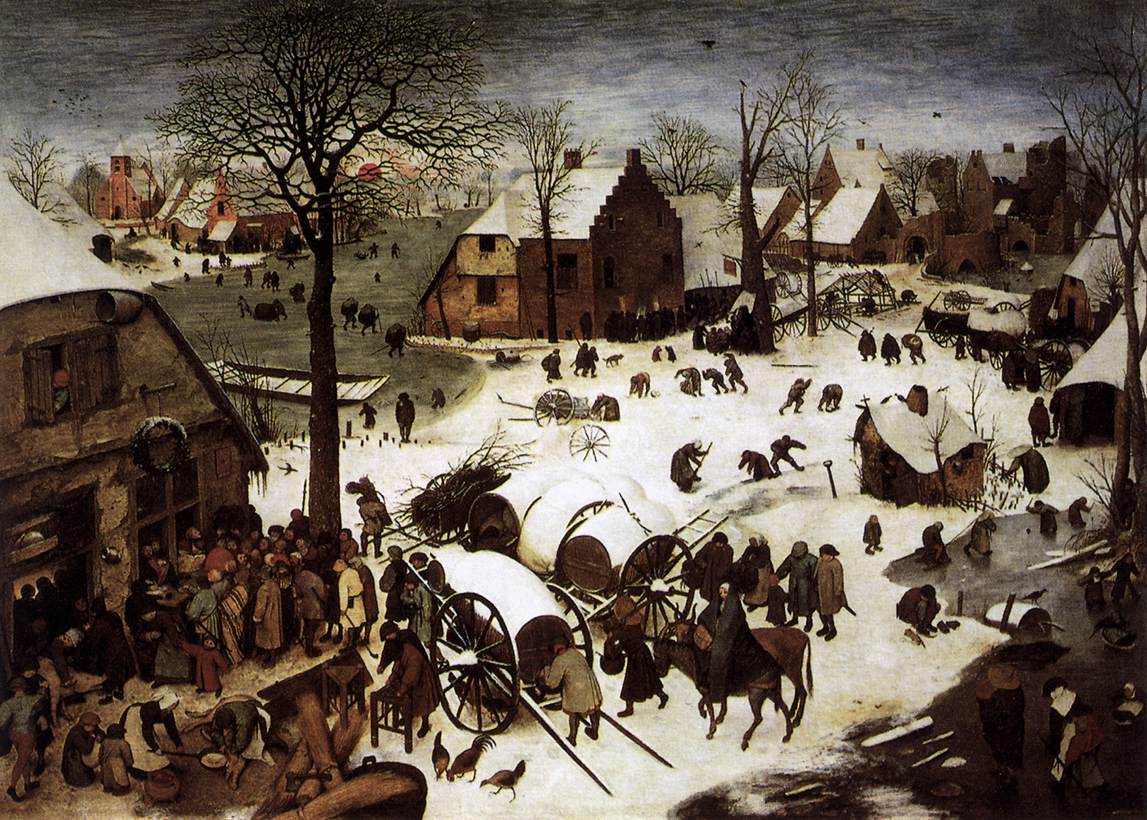Description
The painting "The Census at Bethlehem" by Pieter Bruegel the Elder is a Flemish Renaissance masterpiece featuring a rich variety of elements that make it interesting and unique. The work, which measures 116 x 164 cm, was created in 1566 and represents the moment when Mary and Joseph arrived in Bethlehem for the census ordered by Emperor Augustus.
One of the most notable features of the painting is Bruegel's artistic style, characterized by his realism and his ability to capture detailed, everyday scenes. The composition of the work is very complex and presents a large number of characters, animals and objects in different planes and levels of depth. Furthermore, the artist uses an aerial perspective technique to create the illusion of distance and depth in the scene.
Regarding color, the painting presents a palette of earthy and dark tones, which reflect the austere and humble environment of the scene. However, Bruegel uses a few touches of bright color to highlight certain elements, such as Mary's red cloak or the yellow hat of one of the shepherds.
The history of the painting is also fascinating, as it was created at a time of great political and religious turmoil in the Netherlands, during the Protestant Reformation and the Eighty Years' War. Bruegel, who was a devout Catholic, used painting as a way to express his faith and his solidarity with the peasants and the poor, who were the protagonists of the scene.
Lastly, there are some little-known aspects of the painting that make it even more interesting. For example, Bruegel is believed to have drawn inspiration from the work of other artists, such as Dürer and Bosch, to create some of the most striking details in the scene. In addition, it is known that the work was acquired by Emperor Rudolf II in the 16th century and that it has been the subject of numerous copies and reproductions over the centuries.

